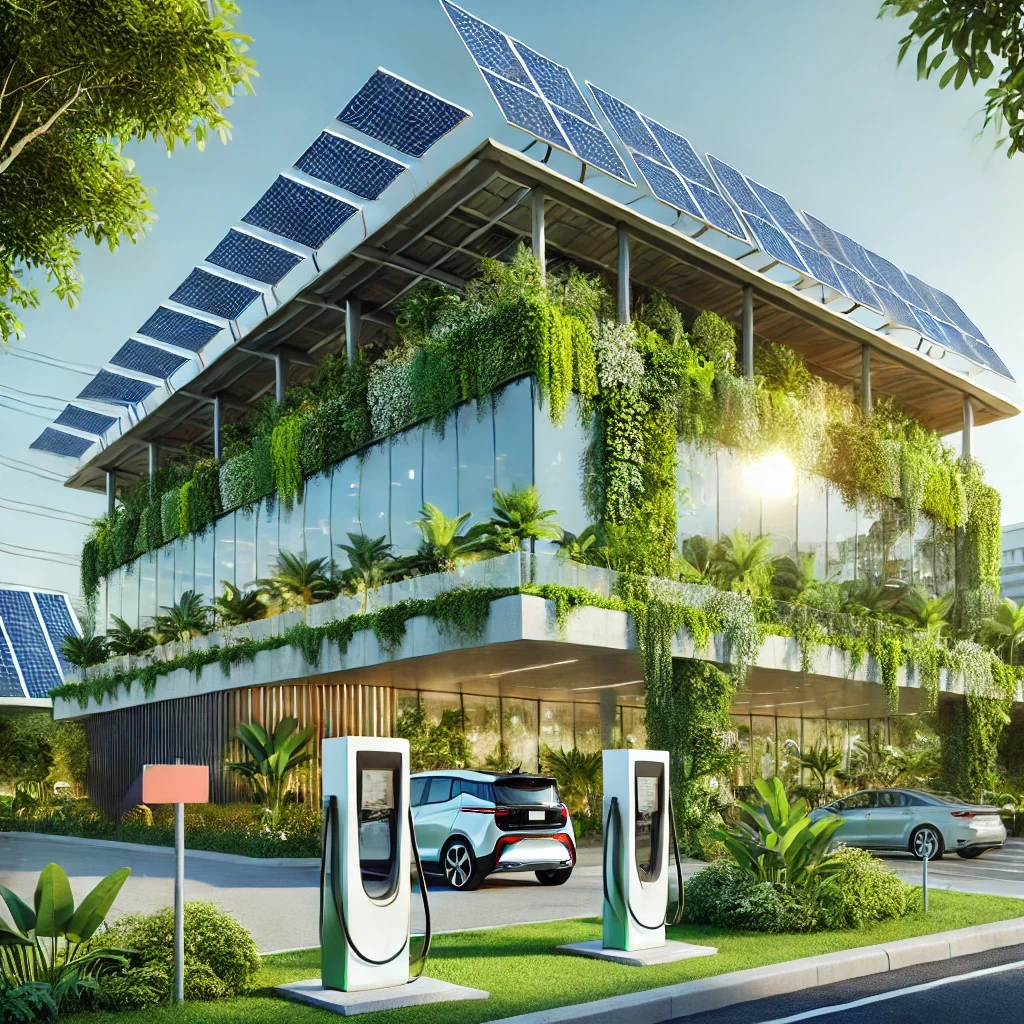Sustainability has become a key focus in the construction and real estate industries. As concerns over climate change, resource depletion, and environmental responsibility continue to grow, businesses and property owners are seeking ways to minimize their ecological footprint. One of the most recognized frameworks for sustainable construction is the Leadership in Energy and Environmental Design (LEED) certification program, developed by the U.S. Green Building Council (USGBC). LEED provides a structured approach for designing and maintaining energy-efficient, environmentally friendly, and high-performance buildings.
What is LEED Certification?
LEED (Leadership in Energy and Environmental Design) is a globally recognized rating system that promotes environmentally sustainable building practices. Developed by USGBC, it offers a framework for designing, constructing, and operating buildings with a focus on energy efficiency, resource conservation, and occupant well-being. LEED applies to a wide range of building projects, including new developments, interior renovations, operational buildings, residential projects, and even entire neighborhoods.
The LEED evaluation system emphasizes key sustainability factors such as energy performance, water efficiency, sustainable materials, site selection, and indoor environmental quality. Buildings earn points based on how well they meet these criteria, achieving certification at one of four levels: Certified, Silver, Gold, or Platinum.
LEED promotes sustainability by encouraging innovation, reducing energy consumption, conserving natural resources, and improving occupant health.
This guide explores the differences between LEED v4 and v4.1, the various certification levels, and how the system applies to both residential and commercial projects. Additionally, it covers key sustainability aspects such as energy efficiency, water conservation, indoor air quality, and innovative design strategies.
The LEED Certification Process
The LEED certification process follows several key steps:
Choosing the Right LEED Rating System: Project teams select the most appropriate LEED category based on the building type and scale. The main categories include:
- LEED BD+C (Building Design + Construction): For new buildings and major renovations.
- LEED ID+C (Interior Design + Construction): For interior fit-outs and tenant spaces.
- LEED O+M (Operations & Maintenance): For existing buildings looking to improve sustainability performance.
Registration on LEED Online: Projects are officially registered on the LEED Online platform, where documentation is submitted for review.
Evaluation and Certification: The Green Building Certification Inc. (GBCI) assesses the documentation in preliminary and final reviews.
Certification and Scoring: Based on the points earned, projects receive one of the following certification levels:
- Certified: 40–49 points
- Silver: 50–59 points
- Gold: 60–79 points
- Platinum: 80+ points
LEED v4 vs. LEED v4.1
LEED v4 introduced stricter benchmarks for energy performance, material transparency, and water efficiency. However, to address challenges faced by project teams, LEED v4.1 was developed to enhance flexibility and ease compliance without compromising sustainability goals.
For example, LEED v4.1 offers more adaptable pathways for energy efficiency and revised credit thresholds for materials and resources, making it easier for projects to achieve certification while maintaining high sustainability standards.
LEED for Residential vs. Commercial Projects
Although LEED is widely associated with commercial buildings, it also includes rating systems tailored for residential properties:
- LEED for Homes: Covers single-family homes, low-rise, and mid-rise residential developments.
- LEED BD+C (Building Design + Construction): Applies to large-scale facilities such as offices, schools, hospitals, and retail spaces.
- LEED O+M (Operations & Maintenance): Focuses on improving the sustainability performance of operational buildings.
- LEED for Data Centers: Addresses the high energy demands of data centers, emphasizing energy-efficient infrastructure, heat management, and renewable energy integration.
Key Components of LEED Certification
LEED certification consists of prerequisites (mandatory requirements) and credits (optional enhancements):
- Prerequisites: These are baseline sustainability requirements that every project must meet, such as minimum energy efficiency, water conservation, and waste management practices.
- Credits: Optional features that allow projects to exceed minimum standards, earning additional points toward certification.
LEED Credit Categories
LEED credits are grouped into several categories:
Integrative Process (IP): Encourages early collaboration to maximize sustainability.
Location and Transportation (LT): Rewards sustainable site selection and public transit accessibility.
Sustainable Sites (SS): Focuses on stormwater management and ecological conservation.
Water Efficiency (WE): Reduces indoor and outdoor water consumption.
Energy and Atmosphere (EA): Emphasizes energy conservation and renewable energy use.
Materials and Resources (MR): Promotes sustainable material sourcing and waste reduction.
Indoor Environmental Quality (EQ): Enhances indoor air quality, lighting, and occupant well-being.
Innovation (IN): Recognizes exceptional sustainability strategies beyond standard credits.
Regional Priority (RP): Awards additional points for addressing local environmental concerns.
Conclusion
LEED certification provides a structured approach for designing, constructing, and operating sustainable buildings. Whether developing a single-family home, upgrading a commercial facility, or optimizing a data center, LEED offers valuable strategies for reducing environmental impact, improving energy efficiency, and creating healthier indoor spaces.
By understanding the certification process, credit structure, and performance benchmarks, project teams can achieve their sustainability goals while enhancing long-term economic and environmental benefits.

